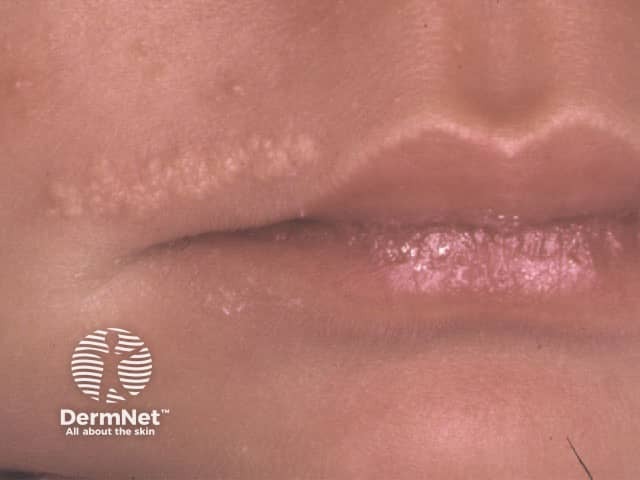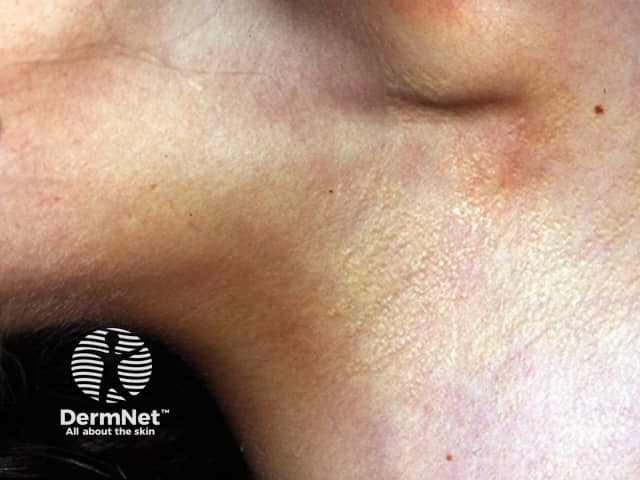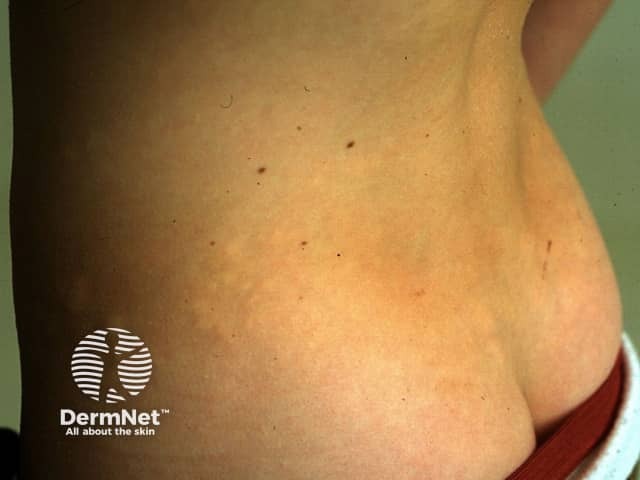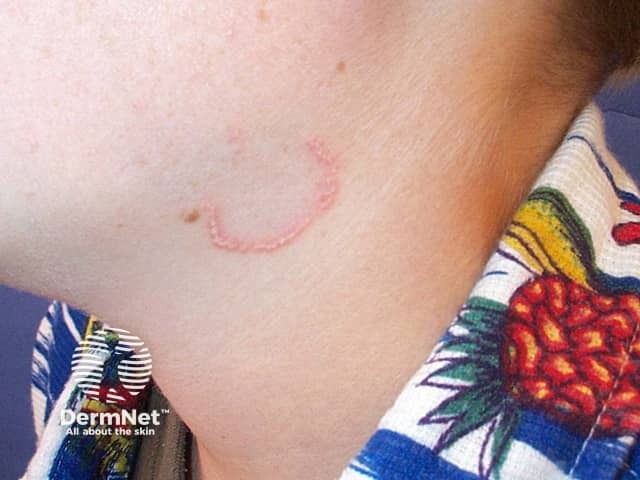Main menu
Common skin conditions

NEWS
Join DermNet PRO
Read more
Quick links
Introduction Collagenomas Elastomas Other connective tissue naevi Treatment
A connective tissue naevus (American spelling nevus) is an uncommon skin lesion that occurs when the deeper layers of the skin do not develop correctly or the components of these layers occur in the wrong proportion. There may be too much collagen; this is called a collagenoma. Or there may be too much elastic tissue; this is called an elastoma. The naevi may also include excess glycosaminoglycans (ground substance of the dermis), excess smooth muscle or excess fat.
Connective tissue naevi are sometimes found in other diseases including tuberous sclerosis, chronic myelocytic leukaemia, syphilis and encephalocraniocutaneous lipomatosis.
Connective tissue naevi are thought to be due to genetic defects in the skin cells.
Collagenomas include:

Connective tissue naevus

Connective tissue naevus

Connective tissue naevus
Familial cutaneous collagenoma lesions usually appear during adolescence. They are characterised by multiple hard nodules of varying sizes over the upper two thirds of the back. They are sometimes associated with cardiac disease.
Shagreen patch is commonly associated with tuberous sclerosis. There are flesh coloured ‘orange-peel’ textured lesions of varying sizes, which are usually found on the lower back and nape of the neck.
Elastomas or elastin naevi include:
Buschke-Ollendorf syndrome is a rare hereditary disorder where there is an increased accumulation of elastin in the dermis (elastoma). Lesions may be present at birth but more usually appear within the first year of life. They are firm yellowish wrinkled nodules often group together to form plaques. The abdomen, back, buttock, thighs or arms are commonly affected. Other manifestations of the syndrome appear with time and may include osteopoikilosis (inherited bone disorder identified on X-Ray), eye disorders and spinal problems.
Elastosis perforans serpiginosa (EPS) is a perforating disorder. In this case, abnormal elastic fibres are extruded through the epidermis. It presents in adolescence and typically affects one or more sites on the face, neck and/or arms. Groups of scaly papules are generally arranged in an arc or ring shape. EPS is associated with other disorders of connective tissue such as Marfan syndrome, Ehler Danlos syndrome, osteogenesis imperfecta, pseudoxanthoma elasticum and Down syndrome.

Elastosis perforans serpiginosa
Congenital smooth muscle hamartoma is first noted at birth or during the first few weeks of life. It is usually a single irregularly shaped lesion that once established remains unchanged.
Fat naevus (naevus lipomatosus superficialis) occurring at birth includes the very rare Michelin tyre baby disorder that is characterised by generalised folding of redundant skin.
Congenital fibromatosis (infantile myofibromatosis) is characterised by single or multiple benign tumours that appear to be derived from connective tissue and smooth muscle cells. These tumours may involve the skin and underlying tissues, bones, and/or certain internal organs. They are present at birth or develop within the first few weeks of life. Lesions usually resolve spontaneously, however severe or widespread involvement of internal organs may cause potentially life-threatening complications.
Mucinous naevus is formed by a deposit of mucin and can be present at birth or develop later in life.
Connective tissue naevi that are not associated with other diseases do not require any treatment. Patients with naevi should undergo full examination to rule out any associated conditions.
Book: Textbook of Dermatology. Ed Rook A, Wilkinson DS, Ebling FJB, Champion RH, Burton JL. Fourth edition. Blackwell Scientific Publications.